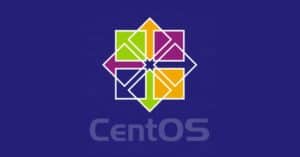The end of CentOS Linux 7 is near.
See how the discontinued CentOS will affect your business and what your migration options are to keep your systems secure and up to date.
What is CentOS
CentOS (Community ENTerprise Operating System) is a popular and free Linux distribution, widely used by companies and developers for its stability and reliability. Derived from the Red Hat Enterprise Linux (RHEL) source code, CentOS offered a robust and secure system while maintaining compatibility with the wide range of software and tools developed for RHEL.
However, in December 2020, Red Hat announced a significant change: the CentOS community would shift its focus to CentOS Stream, an upstream project that predates RHEL releases, while CentOS Linux, the RHEL-derived version, would be discontinued. . This meant that updates for CentOS Linux 8 would end in December 2021, and those for CentOS Linux 7 in June 2024.
For many companies, this decision represented a major change in the IT landscape. Suddenly, the reliability and security associated with CentOS was under threat, leading to concerns about migrations, support, and business continuity. In this article, we'll explore the reasons behind the demise of CentOS, why it was being discontinued, the impact on businesses, and the options available for a safe migration.
Why will CentOS Linux be discontinued?
In a joint announcement made by the CentOS Project and Red Hat in 2020, it was revealed that all investments would be focused on CentOS Stream, the upstream development platform for upcoming Red Hat Enterprise Linux releases. This marks a significant change in development strategy, where CentOS Linux, known for its stability and wide adoption in the community, will be discontinued.
With this decision, CentOS Linux 7, one of the most popular versions, will reach end of life (EOL) on June 30, 2024. This means that security and maintenance updates will no longer be provided after this date, which can pose challenges for users who rely on this distribution for their IT operations.
This change sparked heated debate in the open source community, with some users expressing concerns about the impact on production environments and existing infrastructures. However, it also opens up opportunities to explore alternatives and solutions that meet the evolving needs of the technology landscape.
As we approach the deadline, many organizations are evaluating their options and planning migrations to other Linux distributions or alternative solutions that provide long-term support and stability for their operations.
This transition marks a turning point in the history of CentOS, but it also highlights the dynamic and constantly evolving nature of the free and open source software ecosystem.
How Does This Affect Your Company?
For companies still using CentOS Linux 7, the end of support means they need to migrate to a new operating system before June 2024. Lack of security updates and patches can leave their systems vulnerable to cyberattacks, performance failures and compatibility issues with modern software. Therefore, it is essential to consider a migration to ensure business continuity.
Migration Alternatives
Here are some migration options to consider in light of the discontinued CentOS:
- Migrate to Red Hat Enterprise Linux
Red Hat Enterprise Linux (RHEL) is the most natural alternative for CentOS users as it is derived from RHEL. Migrating to RHEL offers many of the same features, but with full support, regular updates, and built-in security features. Additionally, RHEL offers a user experience similar to CentOS, reducing the need for additional training.
Within RHEL, there are tools like Convert2RHEL that simplify the migration process. This command-line tool can automate the conversion of CentOS Linux systems to RHEL while retaining existing settings and preferences.
- Alternatives to the discontinued CentOs: Explore Other Linux Distributions
Another alternative is to migrate to other Linux distributions, such as Rocky Linux, AlmaLinux or Amazon Linux. These systems offer a similar experience to the tool, but with active communities that support their developments. These options can be ideal for companies that don't want to migrate to an enterprise open source solution.
- Red Hat Consulting for Larger Projects that required CentOS
For organizations with large IT environments or limited resources, Red Hat Consulting can help facilitate migration. Red Hat experts can provide expert support for large-scale migrations, ensuring a smooth transition.
The discontinued CentOS Linux 7 may seem like worrying news, but there are several options available to ensure your business remains secure and functional. Migrating to Red Hat Enterprise Linux offers a smooth transition to a supported and reliable platform, while other Linux distributions offer free alternatives.
Regardless of the choice, the important thing is to act before the end of June 2024 to avoid security risks. If you need more information about how to migrate, we recommend consulting Red Hat Consulting. We are available to help you!

